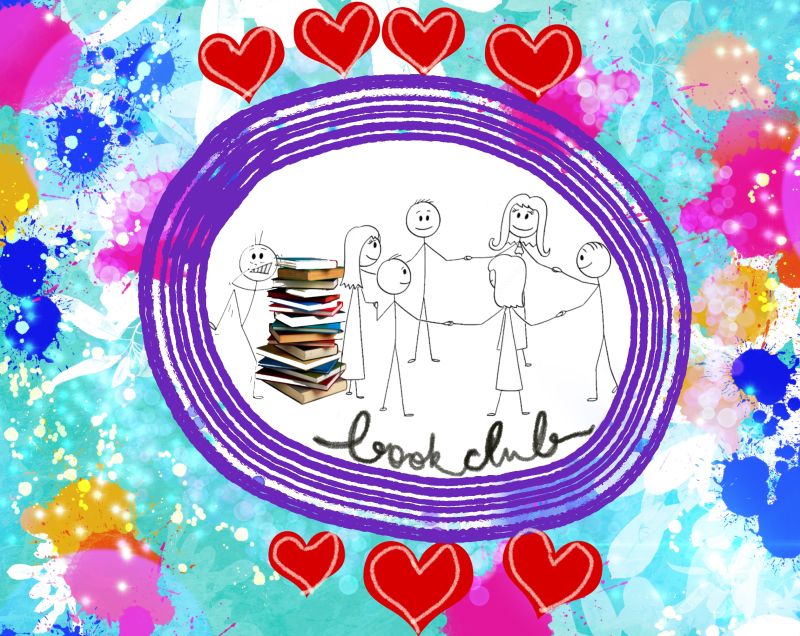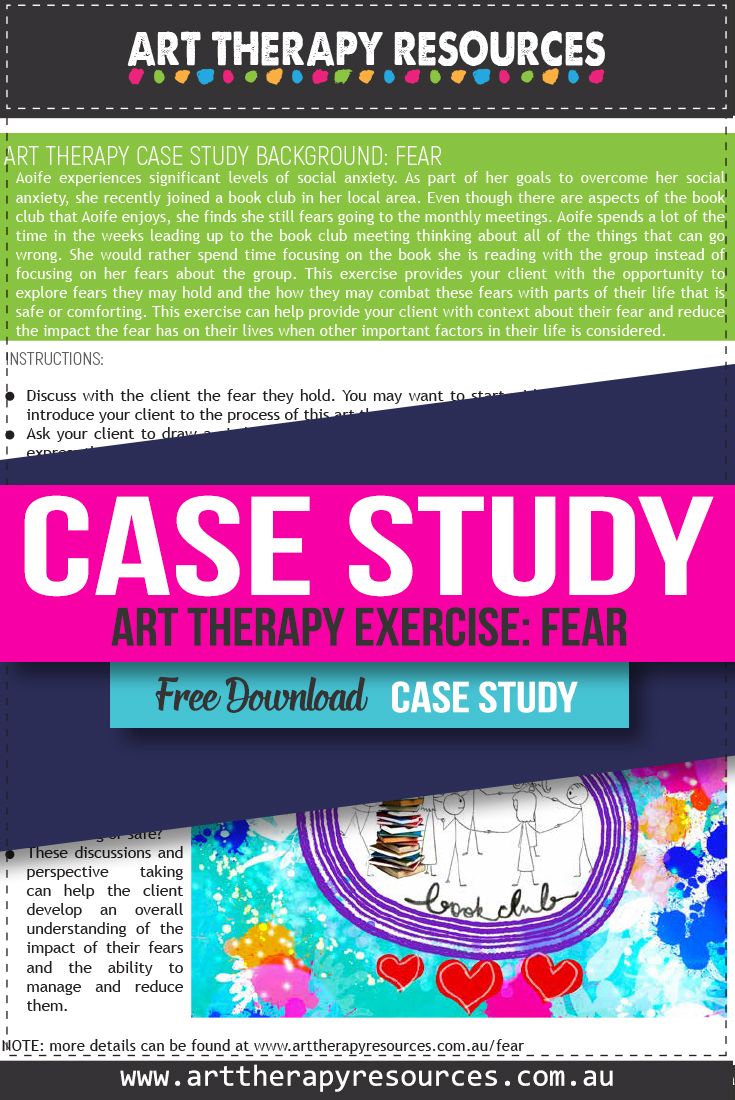THIS POST INCLUDES:
- Art Therapy and Fear
- About the Client
- Art Therapy Exercise
- Client Insight and Outcomes
- Disclaimer
- FREE DOWNLOAD Art Therapy Exercise
ART THERAPY AND FEAR
Fear begins in childhood and as children move through important developmental stages, they gain a new understanding of fears and how to control them. This becomes an important learning phase for children as they transition to adulthood and develop strategies to cope with fears.
As noted by the above examples, fear can also be based on actual physical threats of danger such as traffic or an intangible threat such as the fear of failing an exam. Our fears can be consciously available to us by clearly seeing the threat of traffic crossing the road, or it can be embedded in our subconscious based on an event that may have occurred 30 years ago.
TYPES OF FEARS
To further understand fear, we often categorize them into groups based on the origin of fears and the subsequent reaction. The most basic types of fear categories are:
- Innate – our capacity to experience fear is part of the human condition and explains why we often approach objects and situations with caution.
- Learned – based on conditioning to a previous stimulus that triggers a response. Learned fears can be acquired based on direct or observed experience.
- Phobias – often viewed as ‘irrational’ fears as they are often defined by a persistent and excessive experience of fear that is difficult to manage.
Based on DSM diagnosis methodology, fears are viewed under anxiety disorders. Anxiety disorders focus on determining what the individual fears, what situations the individual avoids, and whether a trigger event creates the fear response. This information can help differentiate between the type of disorder including panic, agoraphobia, social anxiety, separation, and other specific phobias.
Art therapy, using psychotherapy foundations, doesn’t always defer to more structural disorder diagnosis. Instead, art therapy meets the client based on their individual needs and interaction in session. While this is the case, an understanding of fear through the lens of DSM can help provide a framework for understanding classic fear based behaviour and possible interventions.
HOW ART THERAPY CAN HELP WITH FEAR
At a basic level, art therapy can be used as a way to reduce stress by undertaking relaxing art making. This can help alleviate feelings of fear where anxiety feels like an ongoing emotion in everyday living.
Art therapy can also help the individual engage in more specific layers of self-regulation including developing base levels of safety, reducing stress reactions, and creating visual cues for orientating the individual’s attention away from a fear based reaction.
Art therapy can also help the individual use art to define a narrative to help them develop a sense of power and purpose that can combat their fears.
Therapists are also able to work with clients to explore the somatic experience of their held fears. Individuals can use art to explore the physical sensations they may have when they experience fear.
Understanding the connection between mind and body can help clients understand the physical experience of their psychological distress so they can identify a psychological reaction compared to a medical diagnosis. Some individuals with intense fears can develop intense thoughts surrounding their physiological experience and interpret that experience to mean a medical illness that can compound any held fears they may have about their safety and wellbeing.
The process of creating physical artworks can positively contribute to an individual’s experience through the process of active engagement leading to the reward of a physical object. For some people, talk therapy can represent conflicting feelings of the benefits of simply talking and focusing on the problems that an individual is experiencing.
Creating art can provide a reprieve from this intense focus by providing an alternative route to exploring an individual’s experiences. Additionally, creating art can provide the individual with a physical representation of their engagement in therapy compared to what they may perceive as intangible results from talk therapy.
Art therapy can work in conjunction with a known CBT method of exposure therapy. In exposure therapy, the client is exposed to the fear conceptually without any direct danger. This can be especially beneficial for those with mild phobias.
Below is a summary of some of the benefits of art therapy for helping with fears:
- Identifying the fear
- Regulating emotions
- Encouraging resilience
- Calms the nervous system
- Acts as a distraction from the fear source
- Interrupts rumination
- Encourages focus on one thing
- Increases self-esteem from the act of creating something
- Reduces over-stimulation from external sources
- Provides tactile stimulation
- Venting, releasing stress
- Useful when verbal expression is limited
- Encourages “play”
- Art activities can be undertaken outside of therapy when situations arise
ABOUT THE CLIENT
- Name: Aoife
- Age: 29
CURRENT CLIENT ISSUES:
Aoife experiences significant levels of social anxiety. As part of her goal to overcome her social anxiety, she recently joined a book club in her local area. Even though there are aspects of the book club that Aoife enjoys, she finds she still fears going to the monthly meetings.
Aoife spends a lot of the time in the weeks leading up to the book club meeting thinking about all of the things that can go wrong. She would rather spend time focusing on the book she is reading with the group instead of focusing on her fears about the group.
ART THERAPY EXERCISE
This exercise can help provide your client with context about their fear and reduce the impact the fear has on their lives when other important factors in their life are considered.
INSTRUCTIONS:
- Discuss with the client the fear they hold. You may want to start with a less significant fear to introduce your client to the process of this art therapy exercise.
- Ask your client to draw a circle in the centre of the page. In that circle, illustrates the fear or express the emotions that eventuate as part of the fear.
- Discuss with your client how the fear is contained in the circle. Does your client feel they can contain their fear? This is an opportunity to discuss with your client their perception of managing their fears.
- Further discuss with your client aspects of their life that represent safety, comfort, or happiness. This could be people, such as family or friends, or it could be objects they hold dear or activities they enjoy.
- Ask your client to surround the contained fear item with illustrations of these elements that they find safe or comforting. They may choose to express the emotions these comforting aspects represent to them.
- Discuss with your client the impact of containing their fears. Do the comforting parts of their life diminish the impact of the fear? Does the fear impact areas of their life that otherwise feels comforting or safe?
- These discussions and perspective taking can help the client develop an overall understanding of the impact of their fears and the ability to manage and reduce them.
CLIENT INSIGHT AND OUTCOMES
Aoife also felt that her fears were not as overwhelming because they could be kept inside a limited scope of her life (the circle). The circle containment gave Aoife a sense of respite while she used her support systems outside of the contained circle to try and combat her fears.

DISCLAIMER
FREE DOWNLOAD: Art Therapy Exercise

BUILD YOUR ART THERAPY REFERENCE MATERIALS:
Pin this image to your Pinterest board.

SHARE KNOWLEDGE & PASS IT ON:
If you’ve enjoyed this post, please share it on Facebook, Twitter, Pinterest. Thank you!
